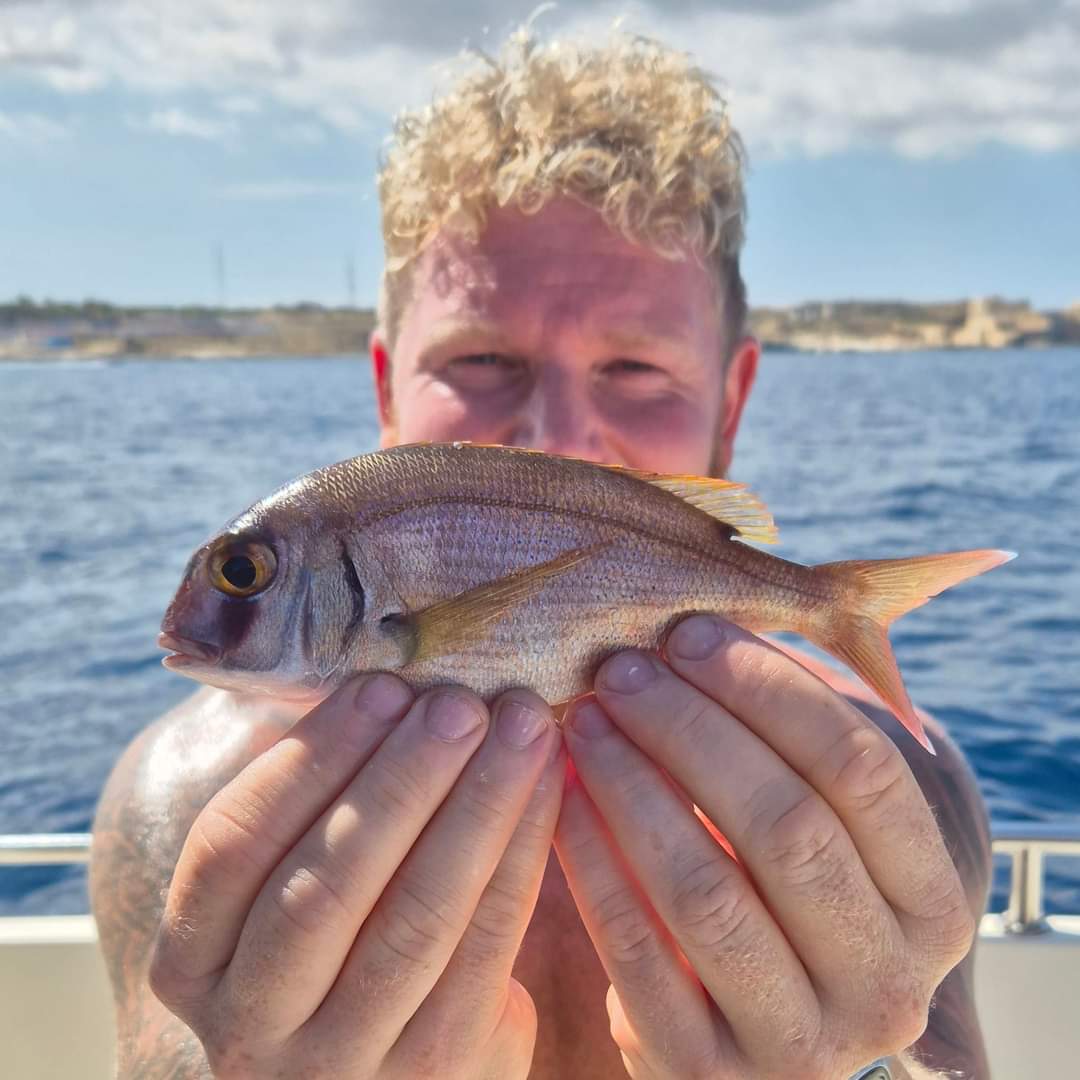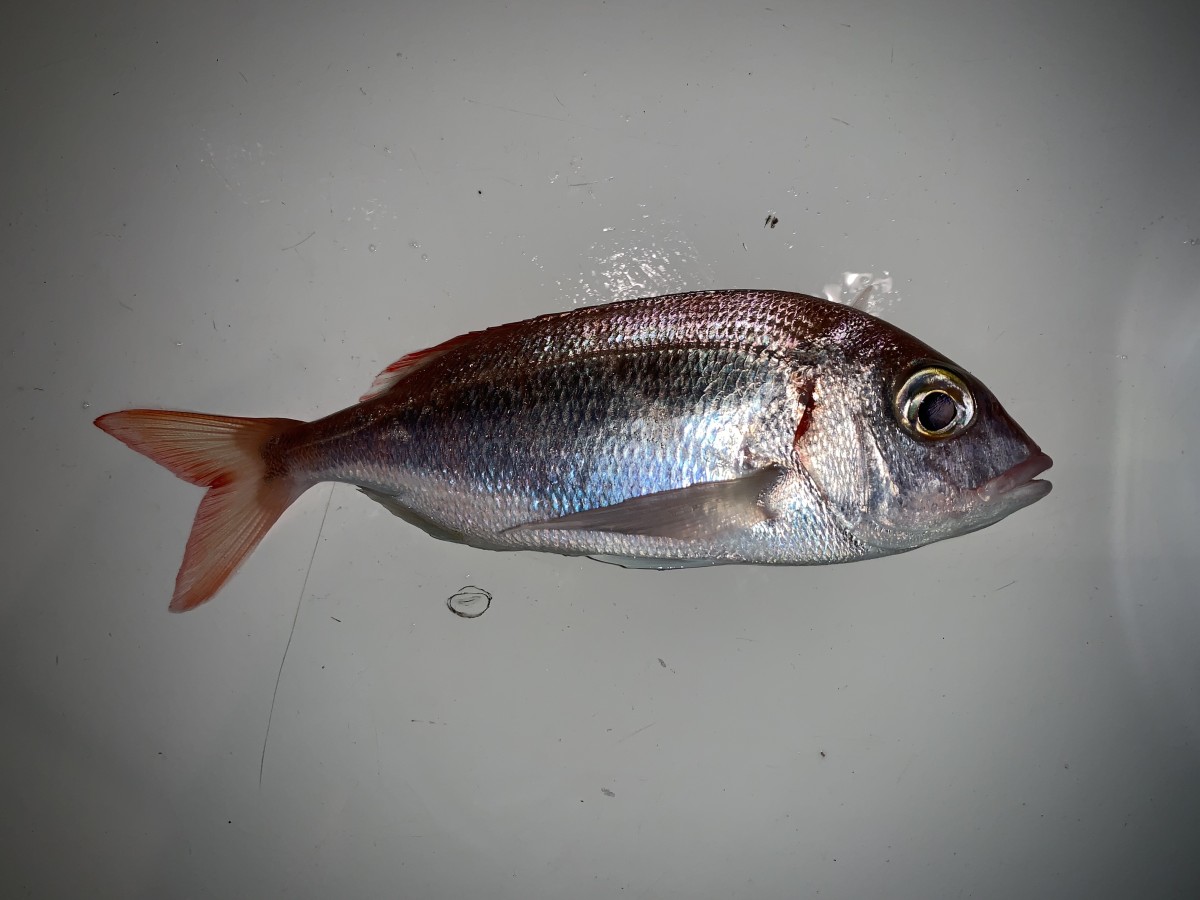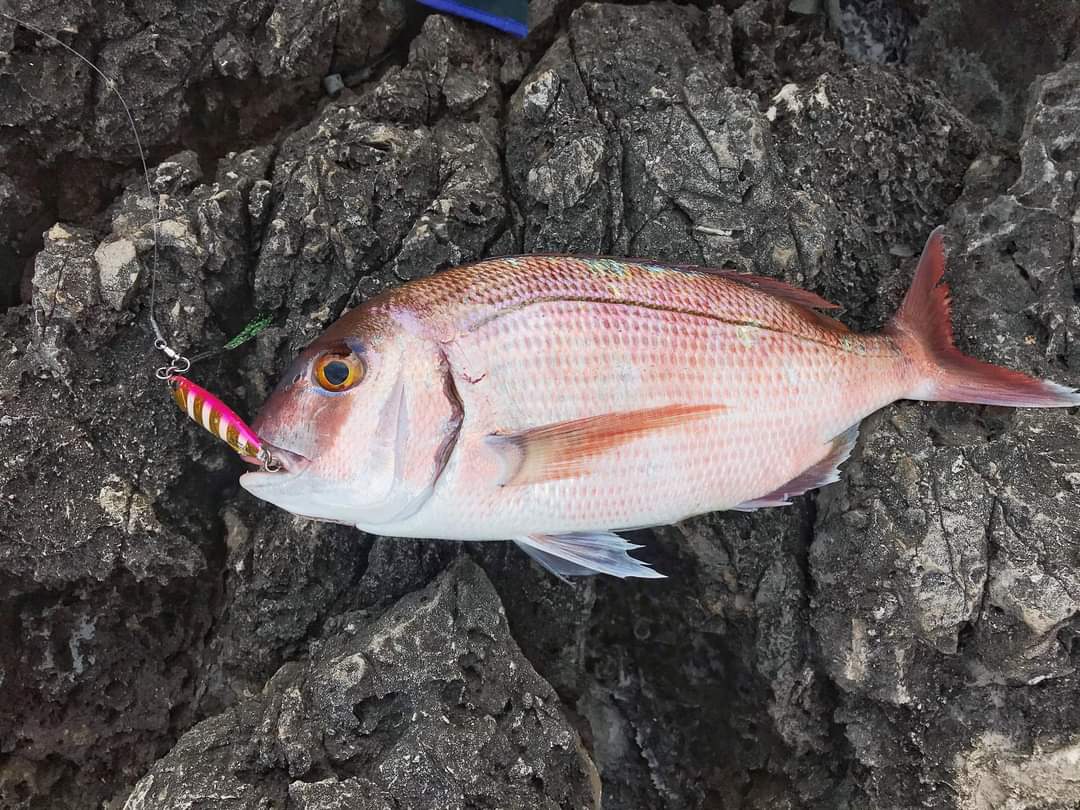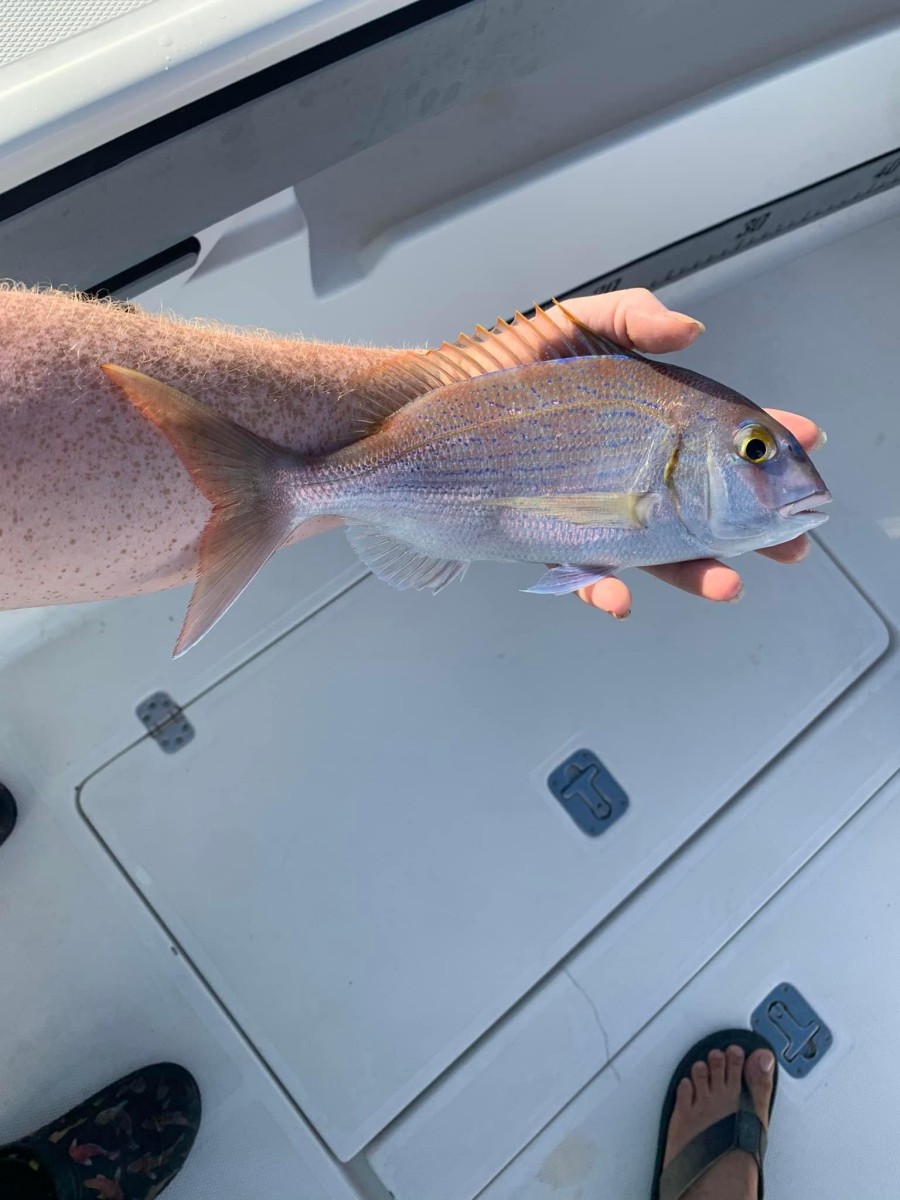Red porgy
(Pagrus pagrus)
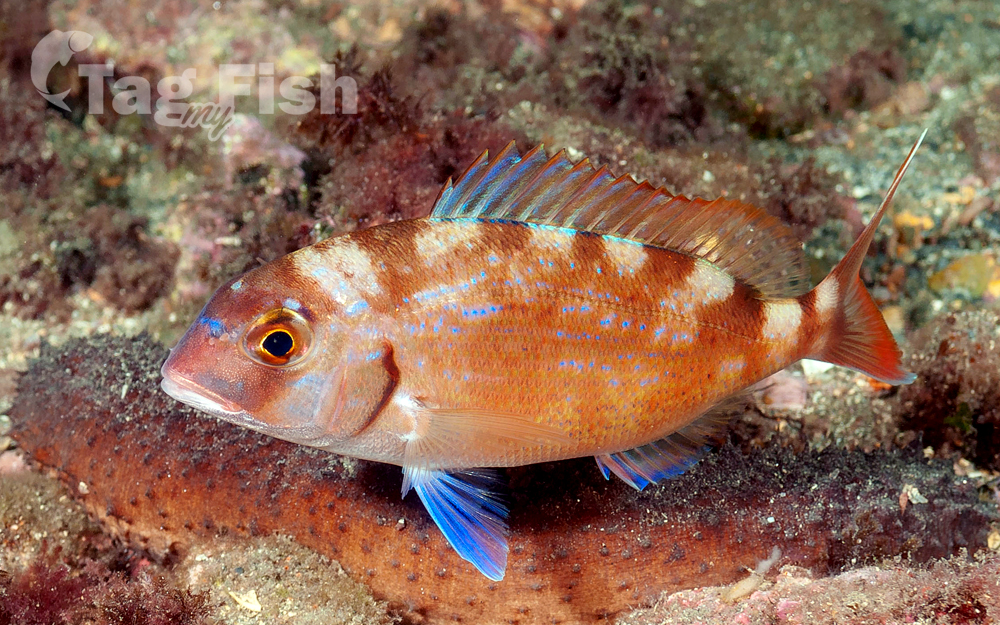
Classification
General data
This fish was first described in 1758 by the Swedish naturalist Carl Linnaeus in the tenth edition of his System Naturae. He gave it the name Sparus pagrus but it has since been moved to the genus Pagrus. Common names given to this fish include red porgy, common seabream and porgy. Along the Gulf Coast, it is known as the white snapper, even though it is not a true snapper. In the United Kingdom, it is known as Couch\\\'s seabream after the Cornish ichthyologist Dr. Jonathan Couch who first discovered this species in the waters around Britain.
The red porgy is a moderately deep-bodied fish with an oblong-shaped body. The standard length is 75 cm (30 in), although a more typical length is about half of this. The dorsal fin has eleven to thirteen spines and nine to ten soft rays while the anal fin has three spines and seven to eight soft rays. This fish is a silvery-pink colour, with darker patches on the nape and behind the pectoral fins. The caudal fin is dark pink with paler tips, and the other fins are pale pink.
The red porgy is found in warm coastal waters on either side of the Atlantic Ocean. On the eastern side, its range extends from southern Britain to Western Sahara, including the waters around the Canary Islands and Madeira and the Mediterranean Sea; its range includes the Sea of Marmara but does not extend into the Black Sea. On the western side of the Atlantic, its range extends from the eastern coast of the United States southward to Argentina; it is present in the Gulf of Mexico and the western part of the Caribbean Sea but not the eastern part. Although it may go as deep as 250 m (820 ft), it more commonly occurs at depths between 10 and 80 m (30 and 260 ft), on continental shelves. It is a demersal species, being found over both rocky areas and areas with soft sediment; juveniles often inhabit beds of seagrass or sometimes enter lagoons.
